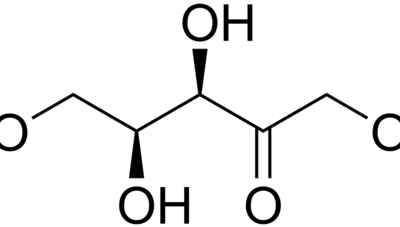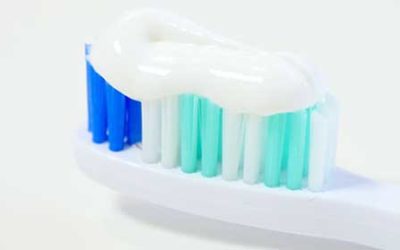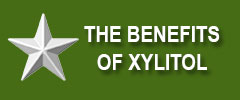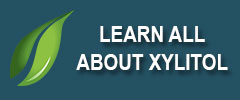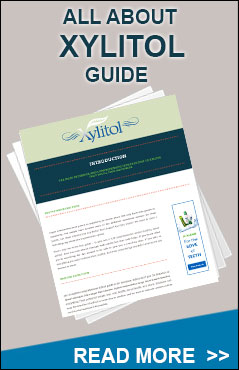The author this paper, H. Mehnert, is a German diabetologist who helped promote the use of implantable insulin pumps more than 40 years ago. He realized how much of a problem has come from our overuse of foods that contain sugars or, like processed wheat products, are easily and rapidly broken down to glucose, the sugar we all use for energy, but unfortunately, get way too much of. He looked at fructose, xylitol, and sorbitol as alternatives and came up recommending fructose because of the GI effects (diarrhea) caused by xylitol and sorbitol. As he pointed out this effect comes from their not being absorbed rapidly so they act to pull water into the GI tract where it softens the stools. It does go away with continued use.
His observations have been softened a lot by later studies showing the dangers of fructose in stimulating hunger and helping lead to our obesity epidemic. In view of this and its other benefits xylitol gains lots of credibility.
The first medical use of xylitol was for diabetics way back in the 1950s. It never really got off the ground then because fructose, in high-fructose corn syrup, was subsidized by the US government in their farm programs and soft drink manufacturers made such tasty products. And that much xylitol would wreak havoc with our GI tracts. But people are still looking. A recent study in South Africa with diabetic rats, for example, shows diabetic markers to normalize.
Internationale Zeitschrift für Vitamin- und Ernährungsforschung, 1976;15:295-324.
Abstract
The decreased glucose utilization in diabetes mellitus justifies the use of sugar substitutes (“diabetic sugar“) if two conditions are fulfilled: 1)The sugar substitute should be a carbohydrate which does not lead, or only to a slight degree, to hyperglycaemia and thus, in this respect, differs distinctly from sugars such as glucose and saccharose. 2) The sugar substitute must not cause undesired side-effects. The absorption, utilization and side-effects of the sugar substitutes fructose, sorbitol and xylitol were investigated. They were found to be more slowly absorbed than glucose and thus to offer the advantage of better utilization under conditions of limited insulin production. However, the particularly slow passive absorption of sorbitol and xylitol can sometimes be a disadvantage, since osmotic diarrhoea may occur after administration of high oral doses. The sugar substitutes enter the metabolism enzymatically and are utilized mainly in the liver. The peripheral state was investigated after intravenous, intraduodenal and oral administration of glucose and fructose to healthy subjects. Liver metabolism was examined (Dietze) by comparing hepatic venous and arterial concentrations after intravenous administration of the sugars. Also, diabetic patients received glucose and fructose orally. As previously demonstrated, the investigations using several techniques showed a smaller influence on blood glucose and serum insulin concentrations after administration of fructose, sorbitol and xylitol than after glucose. If no metabolic changes occur after intravenous administration of high doses, no such changes need be expected after oral administration of small doses. Nor did measurements in hepatic venous blood (Dietze) show any marked effect of fructose on the blood glucose level. The healthy subjects showed no significant changes in blood glucose or serum insulin concentration after either intraduodenal or oral administration of fructose, whereas they showed a considerable increase after glucose administration. Investigations in adult-type diabetics revealed a better utilization of fructose than glucose. With correct dosage, sugar substitutes are able to increase the carbohydrate tolerance and, under certain conditions, to achieve a relative stabilization of the metabolism of unstable diabetics. The antiketogenic activity of sugar substitutes is particularly pronounced. Side-effects such as high blood levels of urea, lactate, triglycerides and bilirubin or a decrease in hepatic adenin nucleotides do not occur after oral administration, nor are they of importance after intravenous administration with correct dosage. The osmotic diarrhoea occurring after intake of sorbitol or xylitol is caused by their slow absorption and limits the consumption of these sugar substitutes. In the often obese adult-type diabetics, the calorie intake inherent in the consumption of diabetic sugars may have an unfavourable influence on their weight.
Access further information on this study here at Pubmed.
Related Articles
What is Pentosuria and How Does it Relate to Xylitol?
What is pentosuria? It sounds a bit daunting doesn’t it? There’s not a lot of information out there about pentosuria, and it can often go overlooked or misdiagnosed. So we thought it would be good to take a quick minute and explain what...
Special Ed and ear infections? Why are they connected?
Ear...
Nasal Irrigation: Washing Away Your Ailments
Having functioning and healthy nasal and sinus passageways can make a world of difference in your daily life. People with allergies often feel wary of enjoying a beautiful day outside because being exposed to allergens such as pollen, dust, and...
Places You Should Substitute Xylitol Sweeteners for Sugar
People often want to find replacements for table sugar in their diets. But which areas are you able to replace sugar? Does xylitol bake as well? Cook as well? Will it dissolve in liquids just as easily? Well the answer to these is yes, yes and...
Xylitol Toothpaste vs Fluoride Toothpaste
Why would you add a sweetener to toothpaste? It might seem counter-intuitive if you aren’t aware of the dental benefits of xylitol. Here’s why we recommend using xylitol toothpaste vs. fluoride only toothpaste. The cavity causing (cariogenic)...
The Nose is a Nidus: A Source of Infection for Ears, Sinuses, and Lungs
What's a nidus? A nidus is defined as “a place in which bacteria have multiplied or may multiply; a focus of infection”. The way it is now the nose is a nidus–virtually all upper respiratory problems, both allergenic and infectious begin in the...

